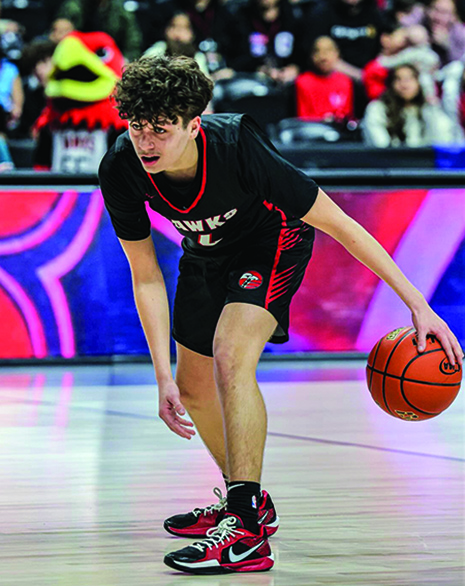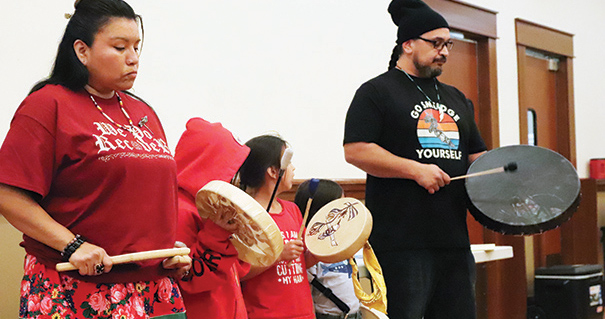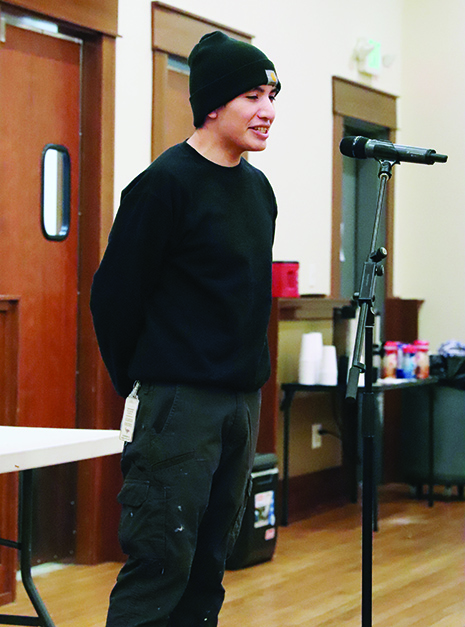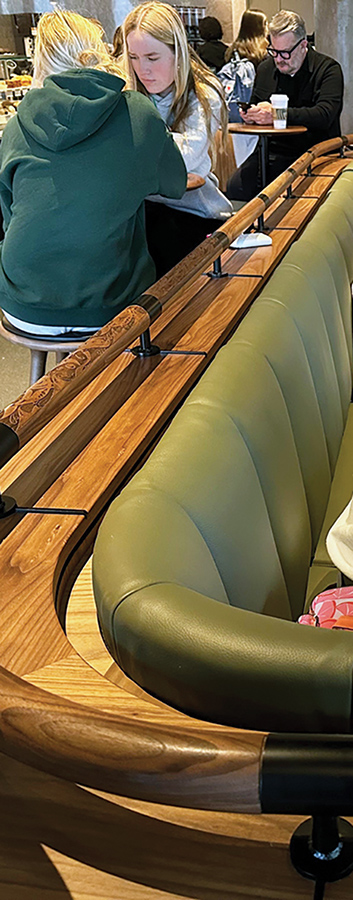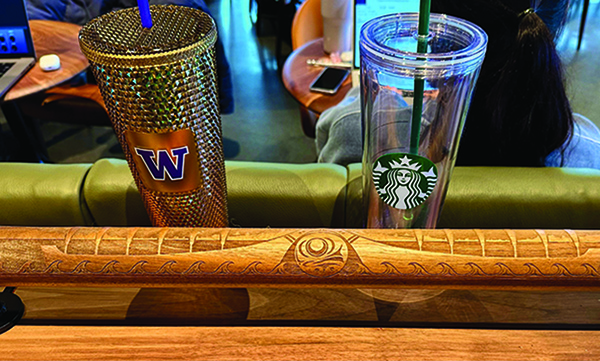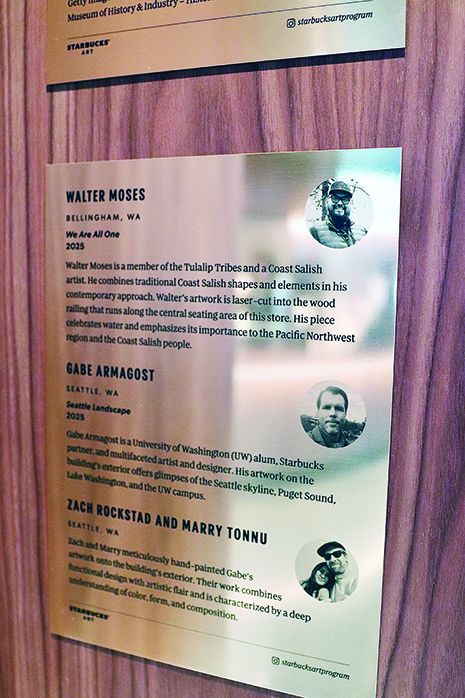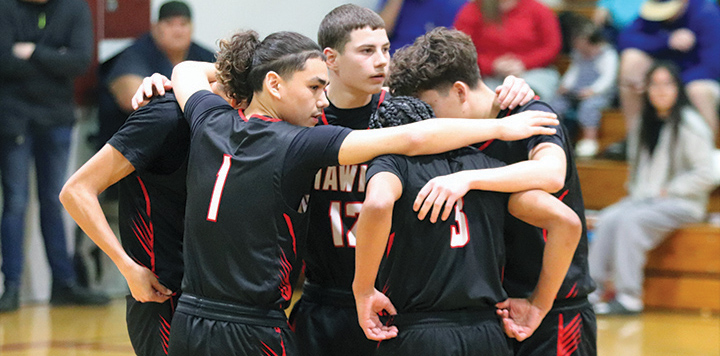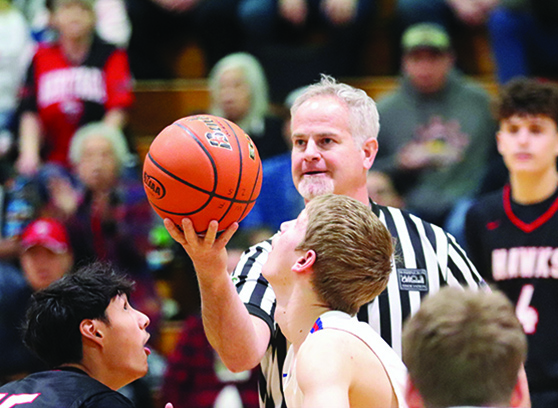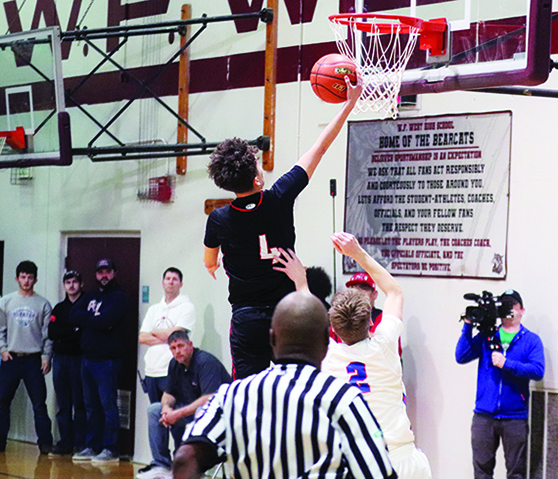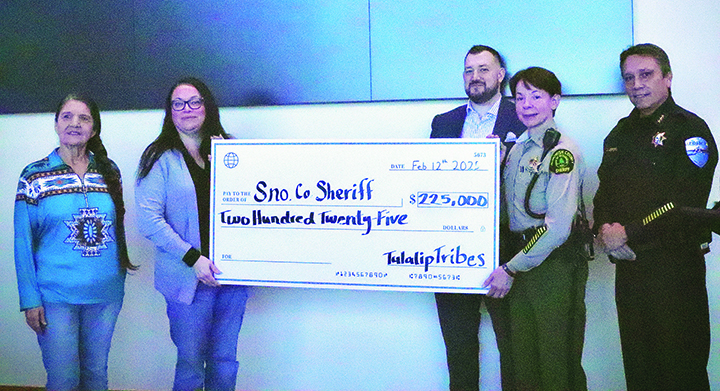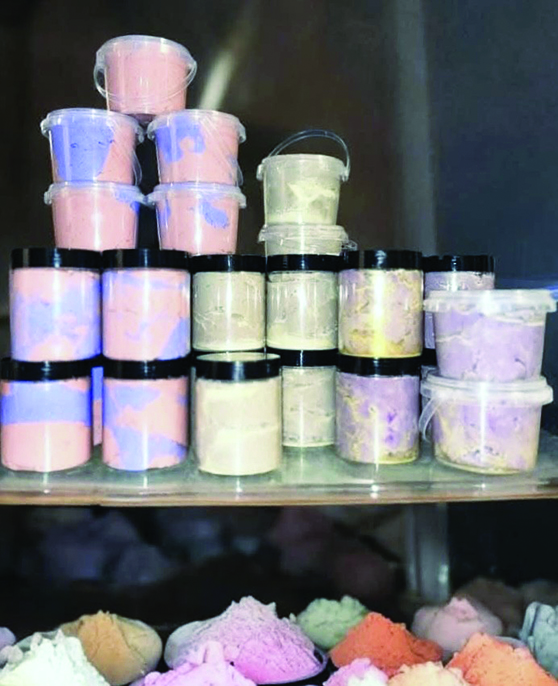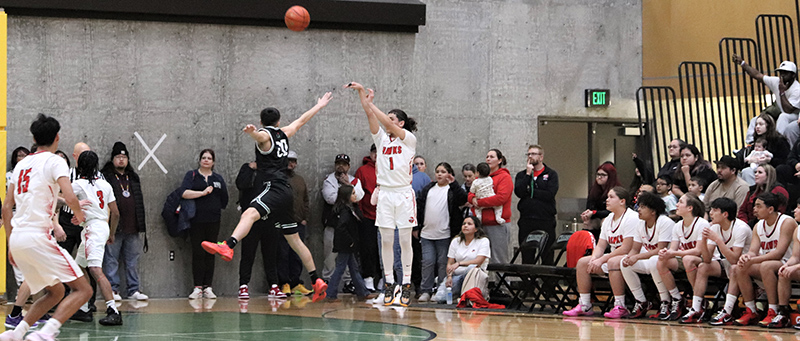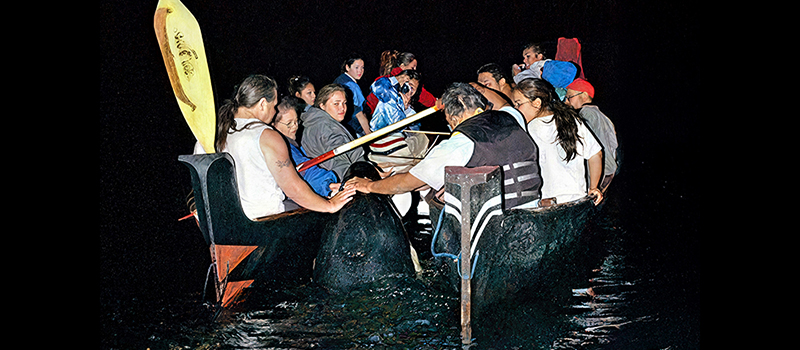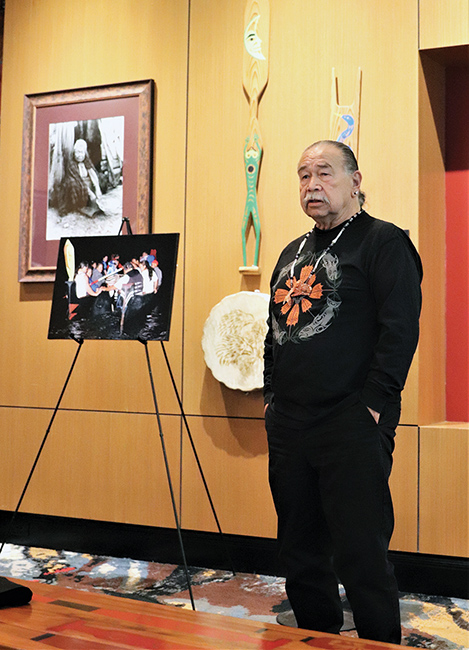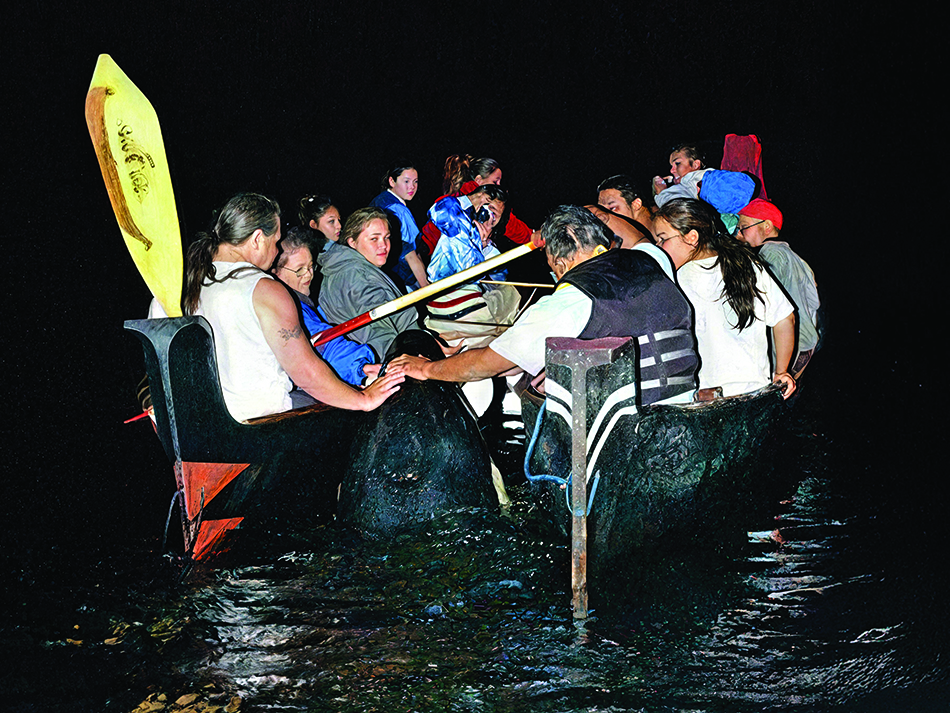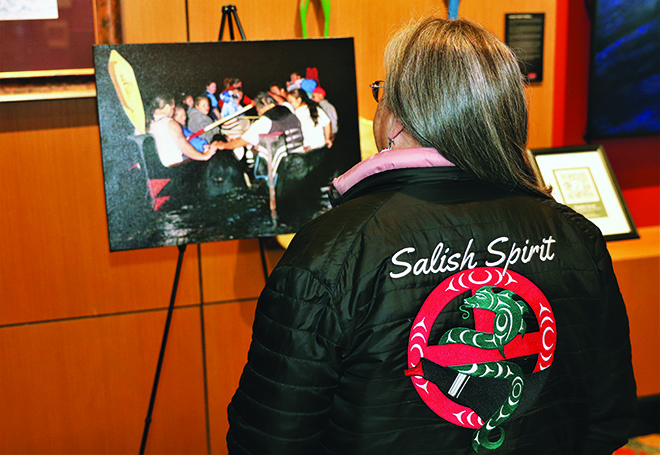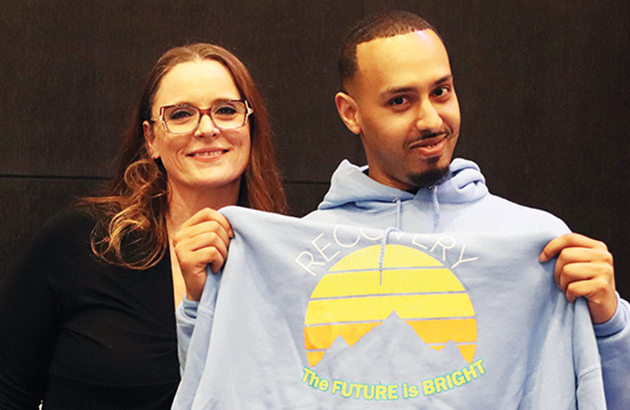
By Kalvin Valdillez, Tulalip News
A Saturday night soiree brought together over 200 community members at Tulalip Resort Casino’s Orca Ballroom on March 15. Held on an annual basis, the Problem Gambling Awareness Month Dinner unites people in the name of healing while promoting recovery and celebrating individuals who attained sobriety from their gambling addiction.
Over the years, the gathering has evolved into an elegant event where the people spiffy up and enjoy dinner and a comedy show, all while learning about the dangers of habitual gaming. In its infancy, the dinner garnered around 50 participants and was held in the halls of the Hibulb Cultural Center. The fact that the event has quadrupled in attendance speaks volumes of the positive impact that the Tulalip Problem Gambling has made on the reservation, as more and more people are seeking aid, and the local recovery community continues to grow.
For the past decade, the Tulalip Problem Gambling program has actively participated in a nationwide initiative known as National Problem Gambling Awareness Month. Taking place every March, during the season of bracket clashing known as March Madness, the Problem Gambling program raises awareness about the compulsive gambling disease by hosting fun, engaging, informative, and impactful gatherings in the community throughout the awareness month.
The perilous and often silent habit affects the Native American community at a much higher rate than other ethnicities. A 2019 study by the National Institute on Alcohol and Related Conditions showed that 2.3% of the Indigenous population in America are battling a gambling addiction.
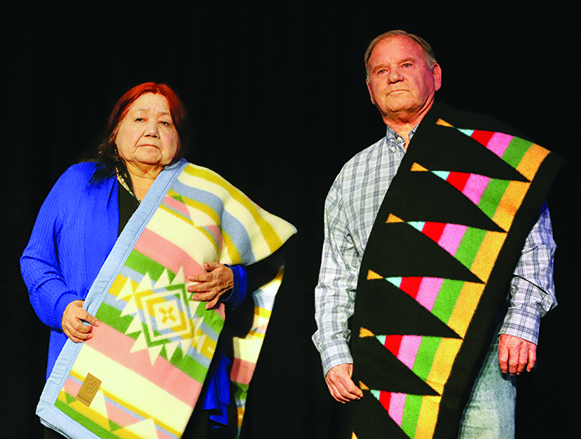
Though heavily focused on problem gambling, the event also celebrates those who are in active recovery for alcohol and substance abuse. Many of those individuals show up to support their loved ones who are recovering from a gambling addiction, only to find out that they also get the chance to celebrate their own hard work of getting clean. No matter the vice, it’s just as important to receive love as it is to show love to others.
The event opened with a traditional prayer and story by Natosha Gobin, Thomas Williams, and their daughter, Lizzie Mae. This year, two individuals shared their personal testimonies at the dinner, Jeff and Joanne. Each spoke of how their gambling addiction abruptly took over their lives, and the strain it consequently put on their friends and family. They talked about hitting rock bottom, Jeff’s happened when he was denied a kidney transplant, and that moment for Joanne occurred when she was facing assault charges. Both Jeff and Joanne were given a second chance and were presented with the option to attend counseling for compulsive gambling, to turn their situations around. Thanks to the Tulalip Problem Gambling program, Jeff and Joanne were able to start their journey to recovery; Jeff received his transplant and Joanne’s charges were dropped. After they each shared their story, the Tulalip Youth Council blanketed them with Eighth Generation wool blankets for their accomplishments, and also for bravely speaking about the challenges they faced and how they overcame.
In Native America, part of the healing journey is laughter. It is one of the best medicines, no doubt. And to be surrounded by the hearty chuckles of uncles and the cackling laughter of aunties is a healing experience in itself. Which is why the Problem Gambling Program is sure to enlist hilarious acts year after year.
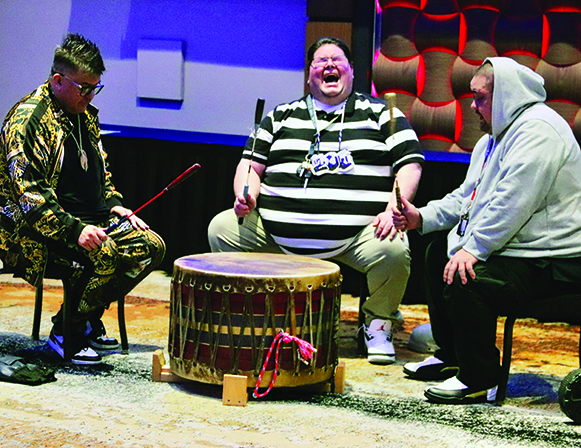
At this year’s dinner, Native Comedian, Vaughn Eaglebear served as the event emcee. While keeping the schedule on a smooth run, Vaughn got a few jokes in and even asked the house drum, the 206 singers, to join in while he sang John Wayne’s Teeth, a song he famously wrote for the movie Smoke Signals.
The keynote speaker was JR Redwater. JR is an OG in NDN comedy and was one of the first Indigenous Stand Ups to achieve national acclaim. JR’s 45-minute set was rated R for rezzy and raunchy as he had the crowd in stitches with his Native humor, a specific brand of comedy that many tribal members can relate to.
The evening concluded with what has now become a yearly tradition at the Problem Gambling Awareness Dinner – the recovery countdown. Vaughn started the countdown at 50 years clean. He asked each person in active recovery to stand when he called out the amount years of sobriety they attained. More than 50 people proudly stood and were cheered on during the recovery countdown, an inspiring, heartwarming, and beautiful sight to see.
Following another successful event, the Tulalip Problem Gambling program coordinator, Sarah Sense Wilson, shared, “This year felt spectacular. Electricity was in the air. I think that having the combination of Vaughn, and his comedy routine buddy JR, flowed really well. We had such good attendance. The Tulalip recovery community has been growing and growing. This event isn’t just well attended because of the speakers, it’s well attended because there is a movement of recovery happening in Tulalip. It’s amazing. And I am proud to be, in some small way, a part of that movement. Tonight, we also had people from Lummi, Swinomish, the Everett Recovery Café here joining together and celebrating recovery. Without the support from the team at Tulalip Family Services, and the Tribal Council, this wouldn’t happen. I give big credit to all of them for making this possible.”
If you or someone you love is suffering from a gambling addiction, please contact (360) 716-4304. Below, you will find more information about the compulsive gambling disorder, submitted by Sarah Sense Wilson.
——————————————————-
Problem Gambling Awareness
By Sarah Sense Wilson
Informed decisions make you a winner. Healthy choices ensure your wellbeing and strengthens your family and community. Our future depends on the choices you make today.
Types of Gambling
- Video Game Betting/Skins or Treasure Troves
- Slahal/Stick games
- Sports Betting
- Bingo
- Scratch Tickets
- 50/50
- Dice
- Internet Gambling
- Raffles
Gambling Facts
- Our Problem Gambling Program is about reclaiming health, wellness, and relationships.
- Tulalip Problem Gambling Program is free treatment, referrals, counseling, groups, and family therapy.
- Tulalip Tribes Problem Gambling Program is comprehensive, culturally responsive and designed to be tailored for each person seeking support.
- Problem Gambling is also referred to as Gambling Disorder, Compulsive Gambling, Addictive Gambling, and Pathological Gambling, or People experiencing Gambling Problems.
- Data: 1-3% of Washingtonians are classified as Problem Gamblers.
- We could fill the Seahawks Stadium (Lumen Field) to capacity 4x to fit all problem gamblers in our state.
- Up to 92% of problem gamblers experience suicidal ideation, and up to 40% attempt suicide.
- Sadly, only one 1-in-10 problem gamblers seek professional help.
Problem Gambling Help: Helpline 1-800-547-6133





